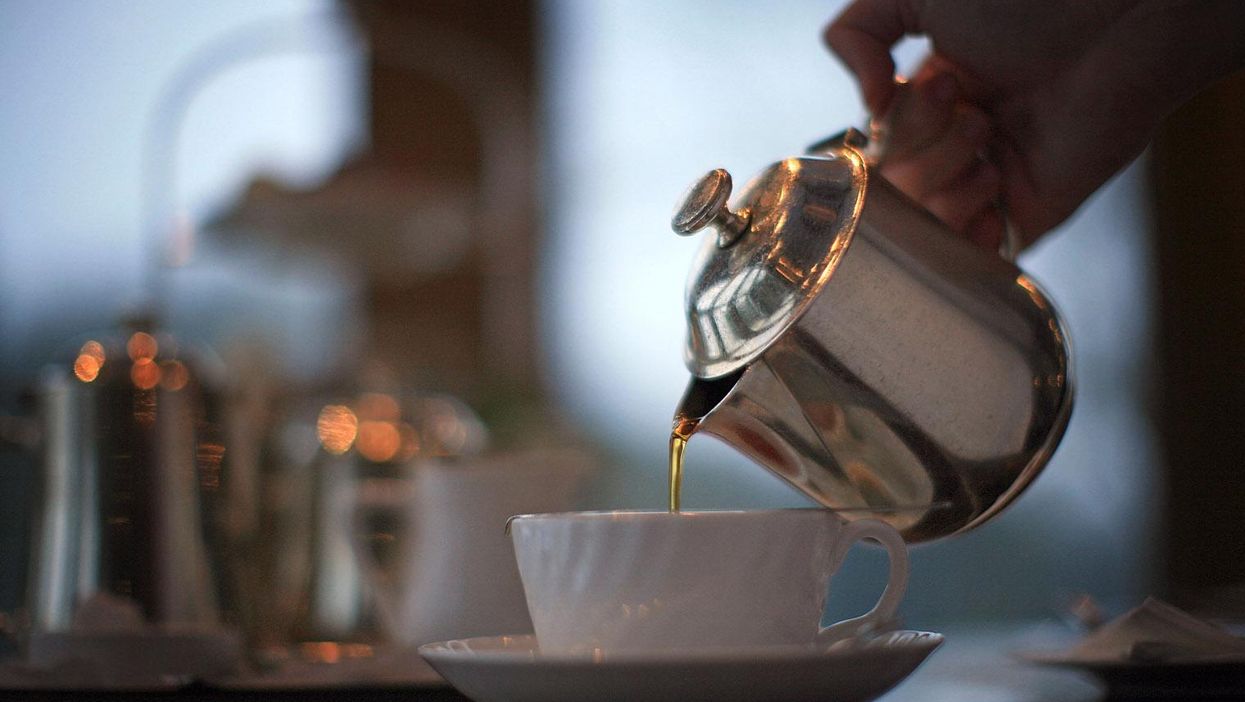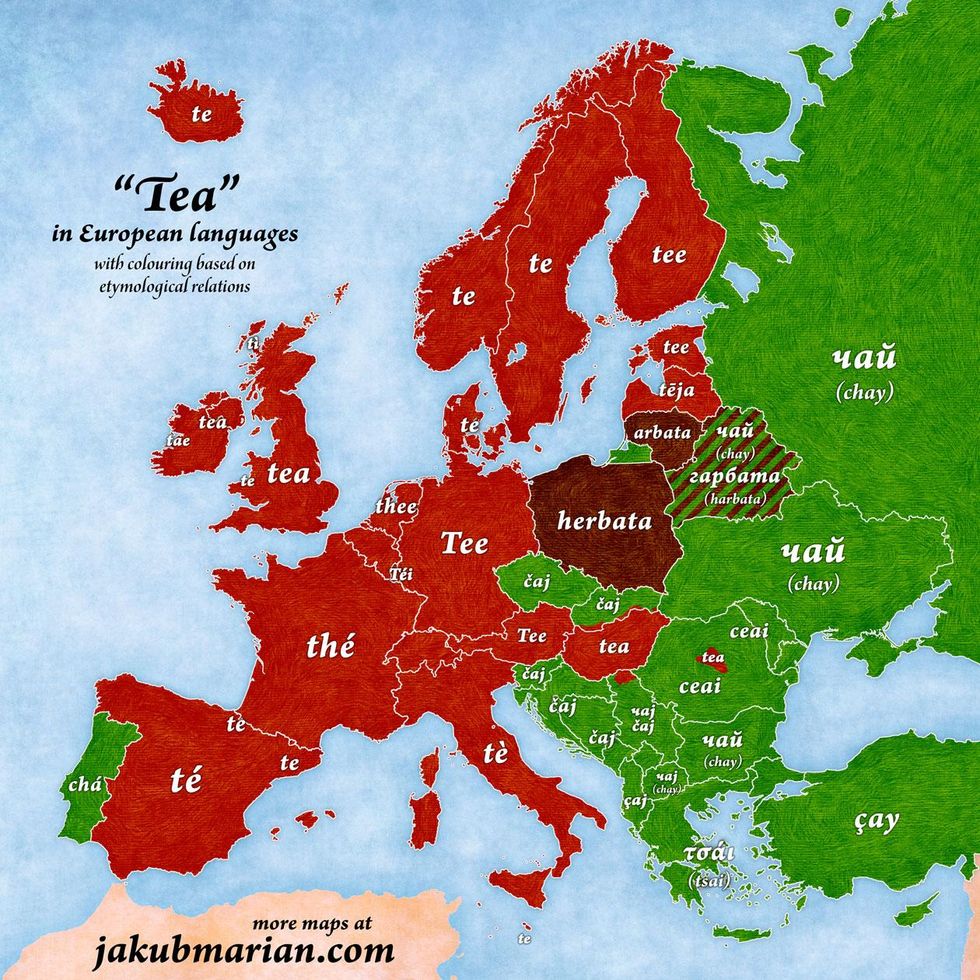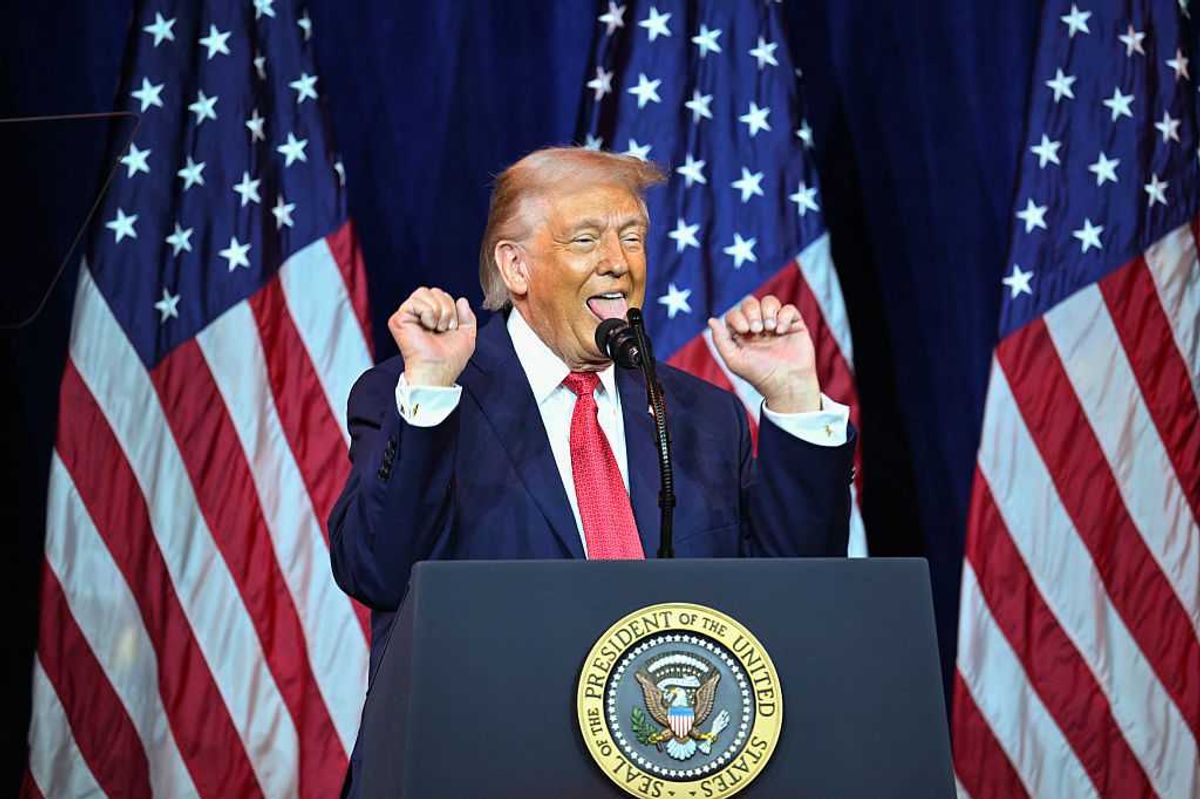Viral
Louis Dor
Apr 20, 2016

Picture: Christopher Furlong/Getty Images
The word for ‘tea’ changes very little wherever you travel in the world.
Jakub Marian, a 26-year-old Czech linguist, mathematician, and artist, has compiled an infographic showing the word for 'tea' in various languages around Europe.
The similarities between the various pronunciations of'tea', 'teh', 'cha' and 'chai' all derive from the Mandarin Chinese 茶, pronounced 'cha'.
When the Portuguese brought tea to Europe, they borrowed the word from the Cantonese-speaking regions of China in the 1550s, while the Dutch trade routes borrowed the 'ta' or 'te' pronounciation from Min-Chinese.
As Jakub discusses, however, this root isn't universal throughout Europe:
Poland, Lithuania, and Belarus (and some parts of Ukraine) are instances of a relatively unique irregularity. The Polish word 'herbata' developed from Latin 'herba' ('herb') and some western European version of 'te'. Thus, every tea in Poland is literally a herbal tea, even when it is not.
So now you know how to request a brew anywhere on the question - just make sure to research the word for 'please'.
More: This map shows the most common surnames in Europe
More: Here are all the different names for Father Christmas across Europe, in one handy map
Top 100
The Conversation (0)














